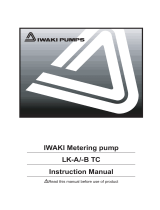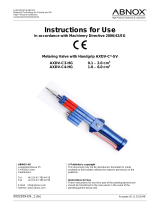
n You have a responsibility to observe the information contained in the
operating instructions for the auxiliary equipment at the different
phases of their respective service lives.
n ATEX designs only: Refer to the chapter
Ä Chapter 2.1 ‘Safety infor‐
mation for ATEX designs’ on page 13
.
Task Qualification
Storage, transport, unpacking Instructed person
Assembly Technical personnel, service
Planning the hydraulic installation Qualified personnel who have a
thorough knowledge of oscillating
metering pumps
Hydraulic installation Technical personnel, service
Electrical installation Electrical technician,
Start up Technical personnel
Operation Instructed person
Maintenance, repair Technical personnel, service
Decommissioning, disposal Technical personnel, service
Troubleshooting Qualified person, electrical techni‐
cian, instructed person, service -
depending on the requirement
Explanation of the table:
Trained, qualified personnel
A trained, qualified employee is deemed to be a person who is able to
assess the tasks assigned to him and recognise possible hazards based
on his training, knowledge and experience, as well as knowledge of perti‐
nent regulations. A trained, qualified employee must be able to perform
the tasks assigned to him/her independently with the assistance of
drawing documentation and parts lists. The assessment of a person's
technical training can also be based on several years of work in the rele‐
vant field.
Electrical technician
An electrical technician is able to complete work on electrical systems and
recognise and avoid possible dangers independently based on his tech‐
nical training and experience as well as knowledge of pertinent standards
and regulations. An electrical technician must be able to perform the tasks
assigned to him/her independently with the assistance of drawing docu‐
mentation, parts lists, terminal and circuit diagrams. The electrical techni‐
cian must be specifically trained for the working environment in which the
electrical technician is employed and be conversant with the relevant
standards and regulations.
Electrical technician with knowledge of ATEX explosion protection
An electrical technician with an additional explosion protection qualification
should be specifically trained for the field of work in which he is employed
and be familiar with the relevant standards and regulations. An electrical
technician with an additional explosion protection qualification can work on
electrical systems and independently recognise and avoid possible dan‐
gers based on his technical training and experience.
The electrical technician with an additional explosion protection qualifica‐
tion is familiar with all the standards and regulations applicable to explo‐
sion protection, in particular, but not exclusively, with all parts of EN 60079
[Electrical equipment for areas at risk of a gas explosion].
An electrical technician with an additional explosion protection qualification
must comply with the provisions of the applicable statutory directives on
accident prevention.
Qualification of personnel
Safety chapter
8























